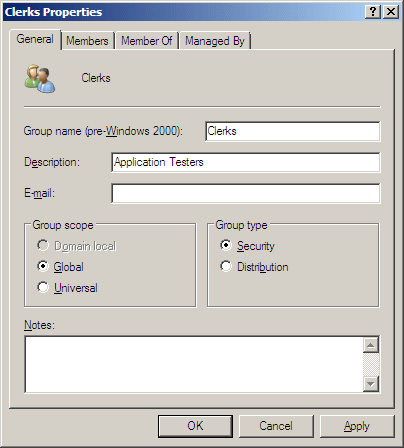 |
Introduction to Microsoft SQL Server |
|
|
Microsoft SQL Server Setup |
|
|
|
Microsoft SQL Server is an application used to create
computer databases for the Microsoft Windows family of server operating systems.
Microsoft SQL Server provides an environment used to generate databases that can be accessed from workstations, the
Internet, or other
media such as a personal digital assistant (PDA).
|
|
To follow our lessons, you must have
access to a computer in which Microsoft SQL Server 2008 is installed. To start, you
must have a computer that runs an appropriate operating system. If you are just
learning, you can use a computer that runs Microsoft
Windows XP Professional, Microsoft Windows Vista, Microsoft Windows 7
(Professional or Ultimate), Microsoft Windows Server 2003, or Microsoft Windows
Server 2008.
|
 |
 |
For our lessons, we will work from Microsoft Windows
7 (Professional and Ultimate) and a server. To get the server together:
- We purchased a Dell PowerEdge T105 (from the
www.dell.com web
site) with an AMD Athlon (tm) Dual
Core Processor 4450B 2.30 GHz with 4.00 GB memory and 2 hard drives
of 160GB each (it had cost us roughly $320)
- We ordered a trial copy of Windows Small Business Server 2008
from Microsoft (free)
- We installed the server operating system
(http://www.functionx.com/networking/sbs2008.htm)
- In the next lesson, we will see how to install Microsoft SQL
Server 2008
|
Before installing Microsoft SQL Server 2008, make sure you
have installed all service packs on your operating system.
One of the main concerns of a database is security, and this
is central to Microsoft SQL Server. To install and use Microsoft SQL Server, you
must use a computer account that must be authenticated to the computer. To
start, you must create an appropriate user account.
|
 Practical
Learning: Creating User Accounts Practical
Learning: Creating User Accounts
|
|
- L(et the teacher l)og in to Microsoft Windows Server 2003 or 3008 with an account that can
create accounts
 |
From now on, in our lessons, when a task must be
performed on the server, we will start the instruction with Server:
|
- Server: To create an account in Microsoft Windows Server 2003 or 2008, on the taskbar, click Start -> Administrative Tools -> Active Directory Users and
Computers.
If you receive a message box, click Continue
- Server: In the left frame, expand the node of the domain if necessary.
Right-click Users,
position the mouse on New, and click User

- Server: Enter the First Name as Patricia and press Tab
- Server: Enter the Initials as H and press Tab
- Server: Enter the Last
Name as Katts (the domain
name will be different from yours)

- Server: Click Next
- Server: Type the password as Password1 and press Tab
- Server: Type the password again as Password1 (accept the options in
the check boxes)

- Server: Click Next (in the summary, the domain name will be different from yours)

- Server: Read the summary in the last page of the wizard and click Finish
- Server: In the same way, create three other accounts as follows:
| First Name |
Initials |
Last Name |
User Logon Name |
Password |
| Gertrude |
D |
Monay |
gmonay |
Password1 |
| Raymond |
|
Kouma |
rkouma |
Password1 |
| Orlando |
|
Perez |
operez |
Password1 |
- Server: After creating the accounts, Click Close
- Each Student: Let each of four students log in at his or her computer using the above user
logon names and
the password as Password1
 |
From now on, in our lessons, when a task must be
performed on the client computer by each student, we will start the instruction with
Each Student:
|
- Each Student: When asked to provide the new password, let the student type a new
password (like P@ssword1)
A security principal is a person or an object that needs access to a database. The security principal can be considered as one entity or as a group of entities:

This means that a security principal can be considered as a lone entity or as
member of a group. For example, a person who accesses a database can be considered an entity. A group of people who
perform the same job and have been give the same
accecss(s) to a database (or to an object of a database) is considered a collection.
To create a group, you use the New Object - Group dialog
box. You must specify at least a name. The dialog box provides other options. After providing and checking the options,
you can click OK. In order to use a group, you should add at least one user to it. To do
this, locate the group and double-click it or right-click the group and
click Properties. When the dialog box opens, click the Members tab. Click Add. In the bottom text box, enter the (complete) user name of the account. Click Check Names. When the name has been resolved, click OK.
You can control the type of access that a security principal can exercise on a machine or a database,
based on a level of accecss. There are three levels: Windows, server, and database:

Based on the functionality of a security principal, it can be considered as belonging to a collection.
To help the operating system identify them, each security principal uses a unique number called a security identifier (SID).
|
|












